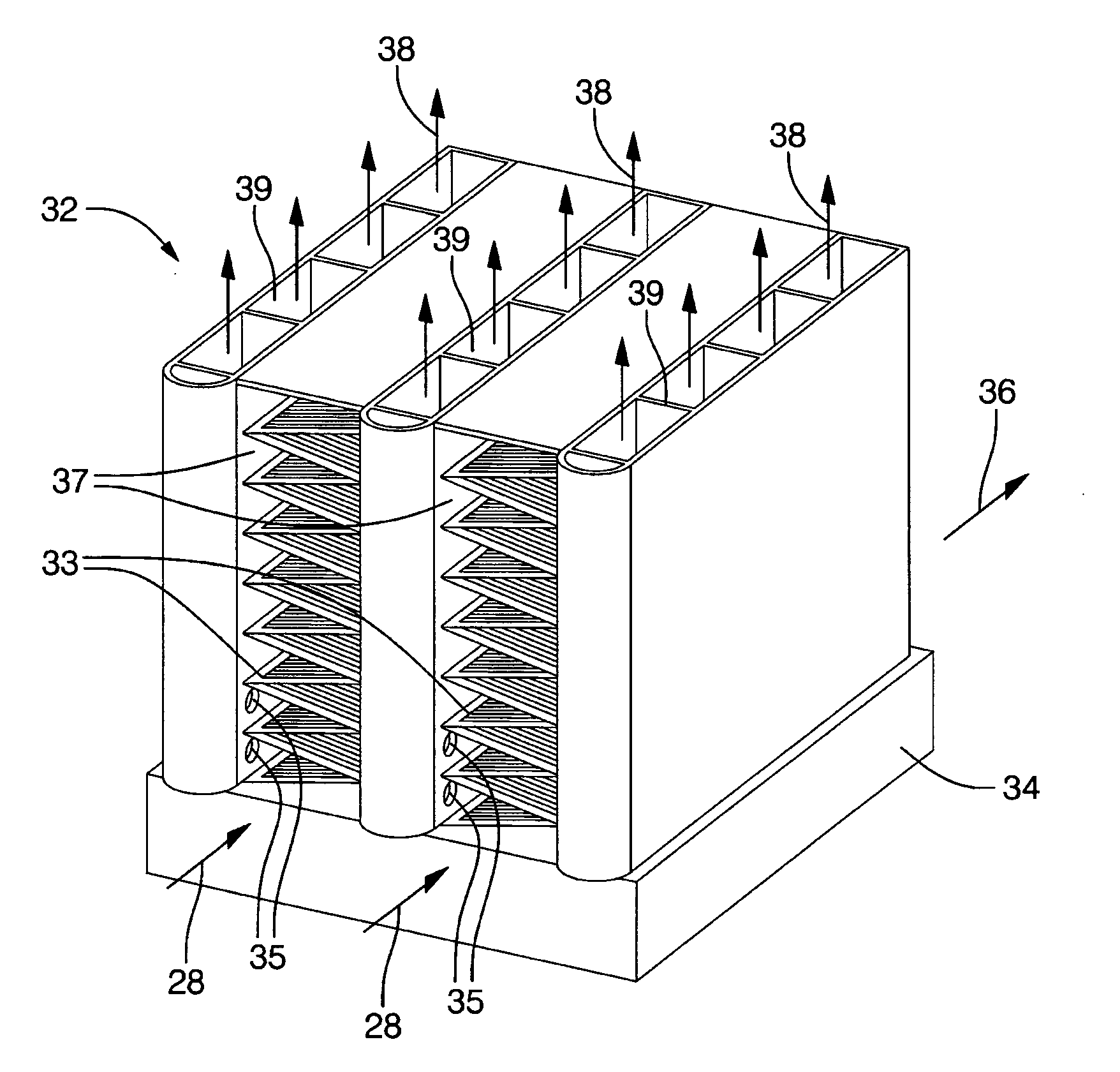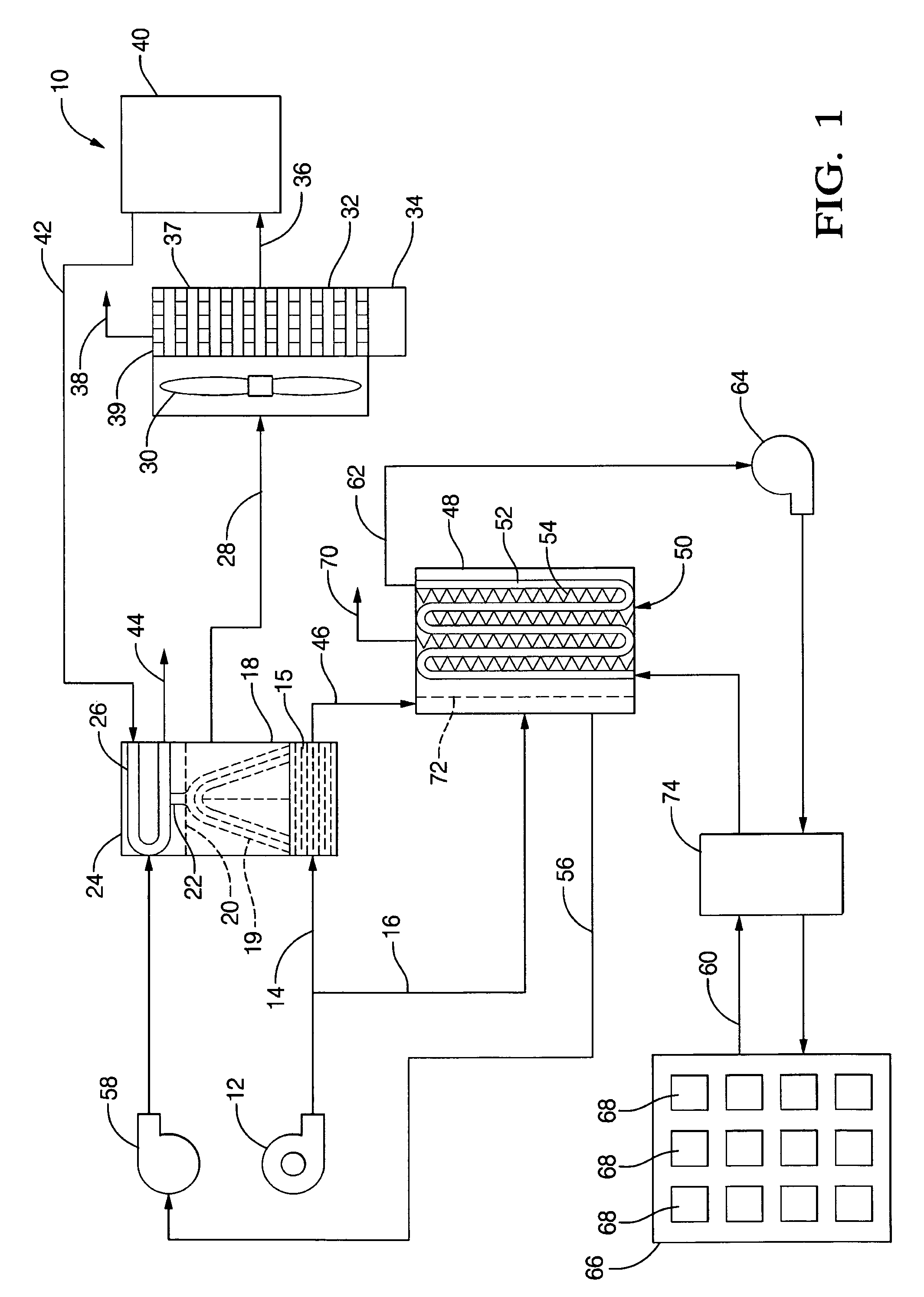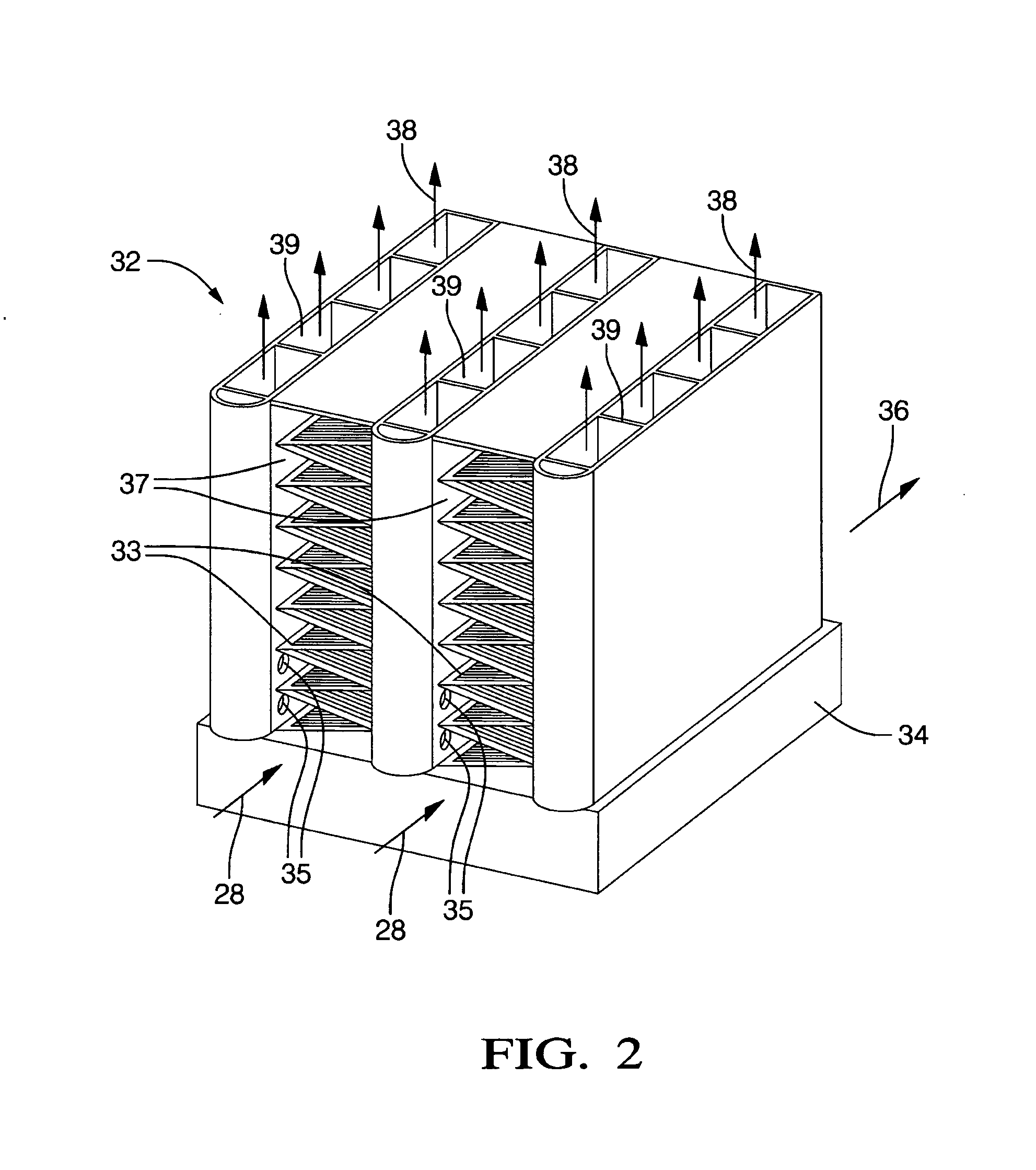Solar-assisted climate control system
a technology of solar energy and climate control, which is applied in the direction of domestic cooling equipment, lighting and heating equipment, heating types, etc., can solve the problems of high air conditioning load, low energy efficiency, and low sensible air conditioning load
- Summary
- Abstract
- Description
- Claims
- Application Information
AI Technical Summary
Benefits of technology
Problems solved by technology
Method used
Image
Examples
Embodiment Construction
[0018]In the exemplary embodiment of the present invention, a dehumidifier with a liquid desiccant is employed to handle the latent load of the air conditioning system. The liquid dehumidifier operates in conjunction with a regenerator which reconstitute the dilute desiccant by removing moisture therefrom thereby ensuring continuous operation of the air conditioning system.
[0019]The solar-powered comfort heating and cooling system comprises an indirect evaporative cooler operating in series with an air dehumidifier. The function of the indirect evaporative cooler is to handle the sensible load and that of the dehumidifier is to handle the latent load of the system. The liquid desiccant used in the air dehumidifier is reconstituted in a shell-and-tube type of regenerator using a coolant heated by an array of solar collectors. An auxiliary heater operating in series with the solar collector array is provided to heat the coolant when there is no sunshine or when the solar heating needs...
PUM
 Login to View More
Login to View More Abstract
Description
Claims
Application Information
 Login to View More
Login to View More - R&D
- Intellectual Property
- Life Sciences
- Materials
- Tech Scout
- Unparalleled Data Quality
- Higher Quality Content
- 60% Fewer Hallucinations
Browse by: Latest US Patents, China's latest patents, Technical Efficacy Thesaurus, Application Domain, Technology Topic, Popular Technical Reports.
© 2025 PatSnap. All rights reserved.Legal|Privacy policy|Modern Slavery Act Transparency Statement|Sitemap|About US| Contact US: help@patsnap.com



